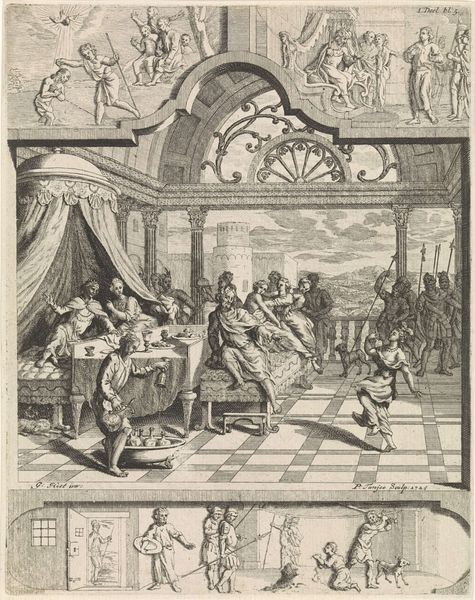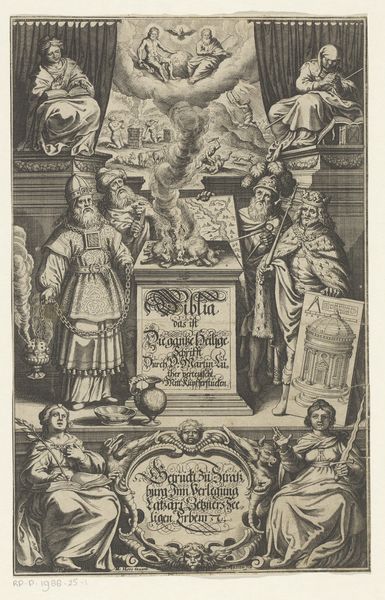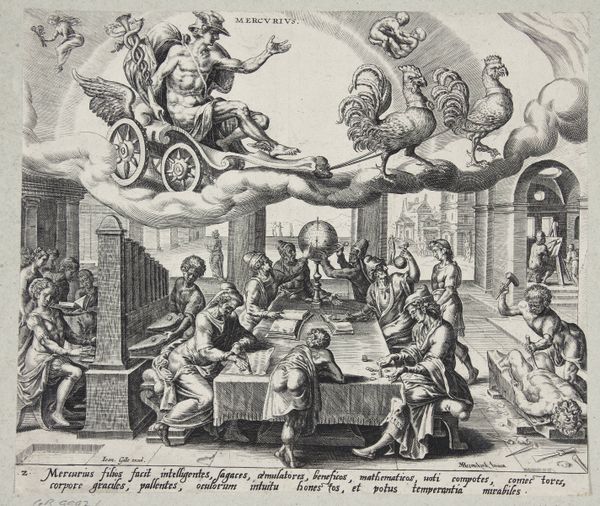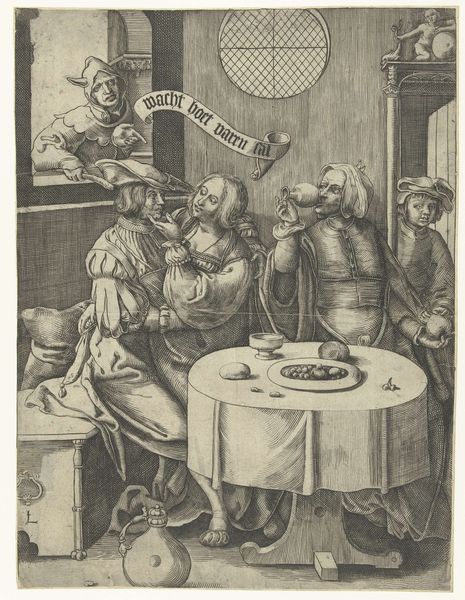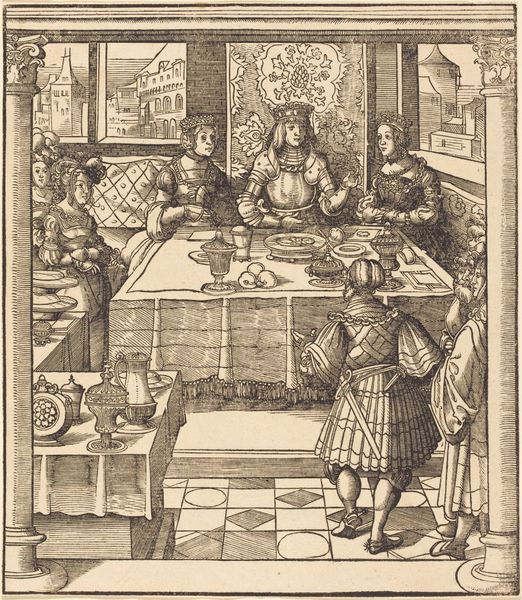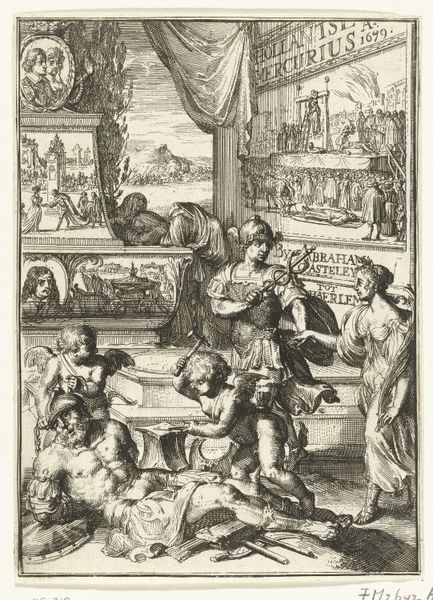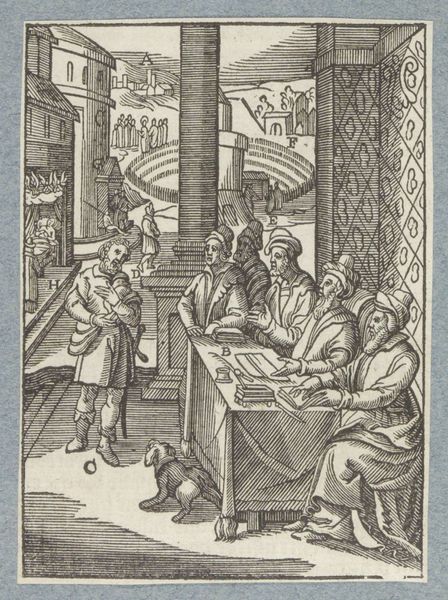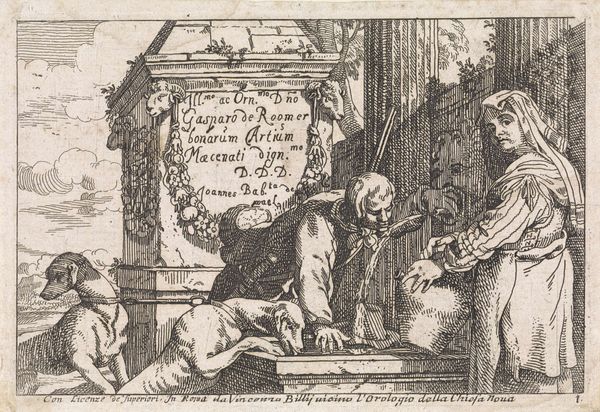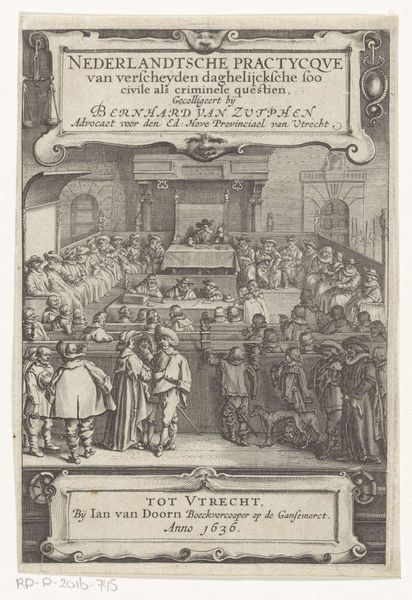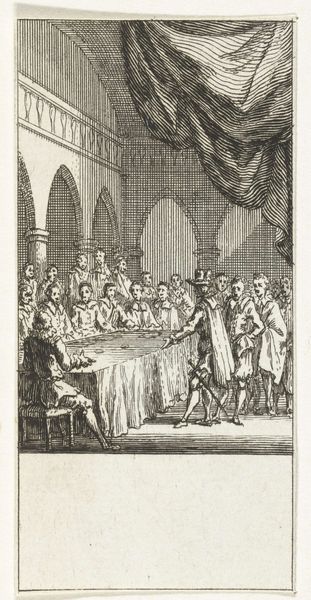
Three Gentlemen Leaning on a Banister Overlooking a Garden where Lovers Stroll, from "The Garden of the French Nobles In Which One Can Pick Up Their Way of Dressing" 1629
0:00
0:00
drawing, print, engraving
#
portrait
#
drawing
#
garden
#
baroque
# print
#
landscape
#
genre-painting
#
engraving
Dimensions: Sheet: 7 7/16 × 5 1/16 in. (18.9 × 12.8 cm) Plate: 5 13/16 × 3 7/8 in. (14.7 × 9.9 cm)
Copyright: Public Domain
This print was made around 1629 by Abraham Bosse, using the technique of engraving. Bosse was unusual for his time, because he didn’t just practice printmaking; he also wrote about it. His treatise on the subject was one of the first to explain the processes to a wide audience. Engraving involves using a tool called a burin to carve lines directly into a metal plate. This is a skilled, labor-intensive process, requiring years of training to master. The resulting image has a crisp, precise quality. Look closely, and you can see how Bosse varied the depth and spacing of the lines to create a sense of light and shadow. Bosse’s choice of subject matter is also telling. By depicting fashionable figures in a garden setting, he catered to the tastes of an aristocratic clientele. Prints like this were not just works of art, but also a form of social currency, reflecting and reinforcing the values of the ruling class.
Comments
No comments
Be the first to comment and join the conversation on the ultimate creative platform.

